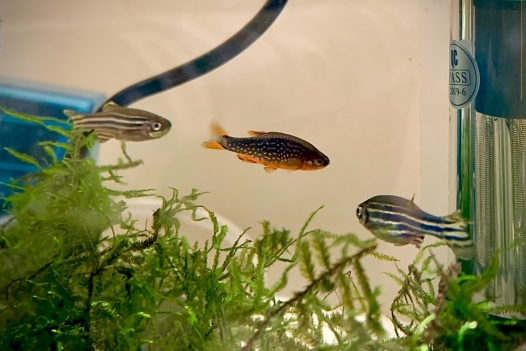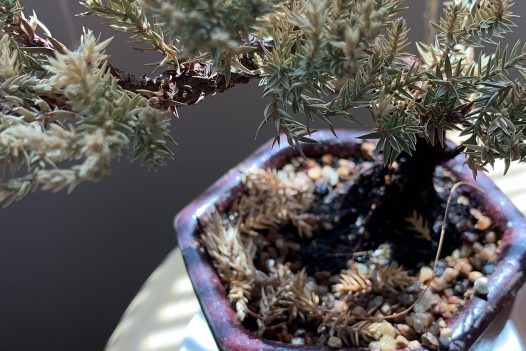
Kutay Deniz Atabay
Courtesy of Kutay Deniz Atabay
Meet a Whitehead Postdoc: Kutay Deniz Atabay
Kutay Deniz Atabay is a postdoc in Whitehead Institute Member Peter Reddien’s lab investigating regeneration, including how neuronal circuits regenerate in various organisms including planarians, a type of flatworm. We sat down with Atabay to learn more about him and his experiences in and out of the lab.
What are you investigating?
I study regeneration in the nervous system in organisms that have a remarkable ability to replace or repair their tissues when lost to injury. I am generally interested in the roles of self-organizing mechanisms that guide cells to form functional neuronal circuits in the central nervous system. I am also interested in compensatory mechanisms that can occur in non-regenerative species. Such mechanisms remain largely unexplored in the context of reintegration of neurons into existing neural circuitry following injury or neurodegeneration.
What is your background in science? How did you get interested in your area of research?
I always knew I wanted to be a scientist. I was oscillating between astrophysics and molecular biology during my high school years. I realized that I was drawn to understanding the fundamental mechanisms that separate the living systems from the non-living. I was also strongly drawn to learning more about the inner workings of the brain, which ultimately can generate a sense of self and a state of conscious awareness. I completed my undergraduate training in biology in Eskisehir, Turkey. Following this, I completed a master’s in molecular biology and genetics at Istanbul Technical University, focusing on neurodegeneration, while working as a research fellow in neuro-oncology in the Department of Neurosurgery of Marmara University in Istanbul. I then worked as a research assistant focusing on neurodevelopment and neurogenetics in Christopher A. Walsh’s lab at Boston Children’s Hospital. My time in the Walsh Lab was a wonderful experience and I developed a deep appreciation for comparative neurodevelopment during these years. Later, I completed my PhD in Neuroscience at MIT, which allowed me to join the Reddien Lab at Whitehead Institute, which was a great adventure.
Through these steps in academia, I had a chance to observe and interact with the whole neuro research spectrum from neurodegeneration to neuro-oncology to neurodevelopment. The field of neurodevelopment was particularly fascinating to me since I got to learn more about how the building blocks come together to generate a functional nervous system. Regeneration offers unique access points to nearly all of these sub-domains. It is a captivating process since it often involves an adult-state organism rebuilding lost structures, which architecturally and functionally integrate into existing structures. As a basic science question, regeneration is attractive, complex and at times elusive. As a clinical science question, it holds so much promise in terms of repair after injury and chronic degenerative conditions. It’s a fascinating field overall.
What did you want to be when you were a kid?
I wanted to be an astronaut and a paleontologist at the same time. I thought being just one thing might not bring all the possible fun. For a while, I wanted to be an astrophysicist and a wildlife documentary maker. There was also a period where I was obsessed with whales, and wanted to be an expert in whale biology and behavior.
What led you to join Whitehead Institute?
During the first month of my PhD training, Peter gave a talk in our department, and I was captivated by this talk and the field of regeneration itself. After having several meetings with Peter, where we talked about regeneration, life in science and other diverse topics, and rotating in the lab, I felt that this would be an exciting path to take, and I joined the Reddien Lab.
What made you decide to stay here for your postdoctoral research?
There is a cookie cutter approach to the progression of steps in academia. I decided to take an unconventional path by remaining in the same lab where I completed my PhD as a postdoc. There are several reasons for this decision. Mainly, I’m happy in the lab, and I think happiness is crucial for creativity and productivity. I felt that asking the right questions at the right time in the right place is more important to me than following a specific kind of template. With the conceptual and experimental freedom provided in my current lab, I plan to establish a completely new research platform here. I also plan to heavily collaborate with and visit other labs for some key crucial steps of this journey. Finally, I wanted to continue to be a part of the Whitehead Institute and MIT community, as I have felt at home here.
What is your favorite non-research-related memory at Whitehead Institute so far?
It’s hard to single out a specific memory, but each Whitehead Institute retreat has been memorable in its own way. There was a night where my labmates and I sat under the stars near a small lake and talked about every imaginable topic, including all the Wes Anderson movies, for hours. Another time, during the Cambridge Science Festival, we talked about planarian regeneration at a ‘Doctor Who’ themed night at the MIT Museum with Peter. There was also the day when I hosted an interactive exhibit for the public on planarian regeneration with my labmate Sam.
What are your hobbies?
Reading feels like my primary hobby. Lately I have started getting into observing the night sky using a small telescope we have at home. I am trying to get better at recognizing celestial objects. It’s a challenge because of the light pollution in the city, but still possible. It’s unfortunate that we are disconnected from the stars because of city life; this possibly facilitates us to focus more on daily worries and forget that we are a part of a larger universe. We actually are on this precious yet fragile planet, and I find that astronomy, as a hobby, can serve as a great reminder of this fact. I also like cooking, painting with watercolors, playing guitar, and hiking.
Could you tell me about your interest in space and space research?
I have always been fascinated with biology in the extreme, such as in microgravity conditions. During my master’s training, I was accepted to the Space Studies Program of International Space University, which took place at NASA Ames Research Center in 2009. In this program, I had the chance to be trained in diverse topics ranging from orbital mechanics to space medicine. I also got to be a part of a team that designed a mission architecture to Mars using Martian caves as initial settlement locations. This experience allowed me to learn more about space biology and introduced me to the pioneers of this field. I have tried to preserve my ties with the space community over the years. During my PhD, I got to be a mentor as part of Genes in Space, a unique and really special program that asks high school students to come up with experimental ideas to be implemented on the International Space Station to expand the capacity for independent scientific research aboard the station and beyond. Through the years, this program has pioneered crucial steps that enabled many first molecular biology experiments including the first PCR, first PCR-based diagnostic assay, and first gene editing experiment using CRISPR in space. I believe this program will continue to push boundaries in the near future as humanity takes its next steps in space exploration.
Do you collect anything?
Just books and memories, because books are good and memories are precious. I often think about Enterprise’s holodeck from Star Trek when I think about a specific memory. It would be fascinating to “visit” and interact with a memory in that fashion. Maybe one day.
Do you have any pets?
We have three fish at home, and a semi-alive bonsai tree that we treat as a pet. I hope to bring it back to its fully alive state someday.

Atabay's fish
Courtesy of Kutay Deniz Atabay

Atabay's bonsai tree
Courtesy of Kutay Deniz Atabay
What is the coolest thing that you have seen in the lab?
Two things come to mind: A three-eyed planarian that we generated with a simple surgical trick, and axons coming from a transplanted planarian eye and seeking their target location in the brain to connect the transplanted eye to the existing neural circuitry. Both of the moments when we first saw these were incredible!
Where do you see yourself in ten years?
I hope to run my own research group focusing on comparative regeneration and development within the nervous system, and maybe occasionally go to space to conduct experiments there as well.
Topics
Contact
Communications and Public Affairs
Phone: 617-452-4630
Email: newsroom@wi.mit.edu


